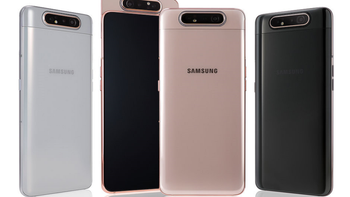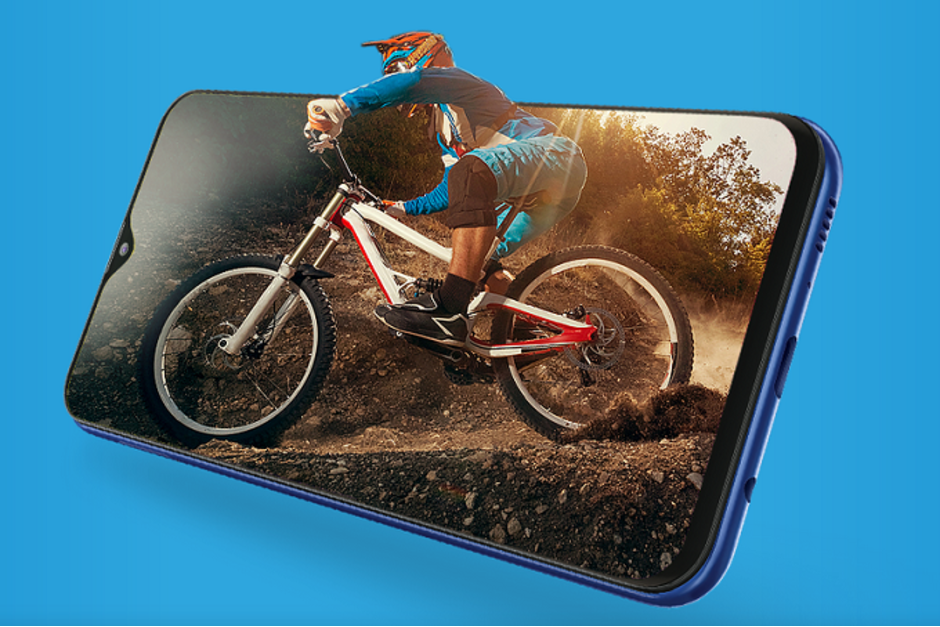Samsung's mid-range Galaxy A line is selling like hot cakes

Back in March, Samsung started selling its latest mid-range Galaxy A models. According to Reuters, Samsung India’s chief marketing officer Ranjivjit Singh says that the company has sold over 5 million units of these phones producing revenue in excess of $1 billion over the first 70 days. The models range from the Galaxy A10 to the Galaxy A80 and pricing in India ranges from between 5,290 rupees (equivalent to $75.11 USD) to 28,990 rupees ($411.59 USD at current exchange rates). Overall, Samsung expects the line to generate $4 billion in sales for the company this year.
Samsung, once India's most popular smartphone manufacturer, has seen upstarts from China like Xiaomi and Oppo sell value priced handsets in the country. According to the latest data, Xiaomi was the leading smartphone brand in India during the first quarter while Samsung was second with a 23% share (despite a 4.8% decline in shipments year-over-year). However, as pointed out by Counterpoint Research, Samsung was the top purveyor of premium phones in the country during the first three months of the year. That was due to the success of the Galaxy S10e, Galaxy S10, and Galaxy S10+.
The Samsung Galaxy A phones have large screens, hefty batteries, and viable cameras. The Galaxy A10, the entry-level model in the series, carries a 6.2-inch LCD display with a resolution of 720 x 1520 (HD+) and an aspect ratio of 19:9. The phone has 2GB of memory and 32GB of storage. There is a 13MP camera on the back with a front-facing 5MP selfie snapper. The phone is powered by the Exynos 7884 SoC and includes a 3400mAh battery.
Samsung is fighting back in India with its Galaxy A and Galaxy M models
Compare those specs with the near flagship ones on the Galaxy A80. The latter model sports a 6.7-inch Super AMOLED display with a resolution of 1080 x 2400 (FHD+) and an aspect ratio of 20:9. The Snapdragon 730 Mobile Platform is under the hood along with 8GB of memory and 128GB of storage. A triple camera setup is on the back consisting of a 48MP primary camera, an 8MP camera with an ultra-wide lens, and a Time-of-Flight (ToF) sensor. The latter measures the time it takes for an infrared beam to bounce off the subject and return to the phone. This data allows the device to more accurately measure depth for the bokeh effect on portraits, and is used for AR features. This model features a rotating camera and carries a 3700mAh battery. As you can see, the Galaxy A range is wide.
"Just in 70 days of launch this range of six models has delivered $1 billion of revenue."- Ranjivjit Singh, chief marketing officer, Samsung India
Another series that Samsung is using to win back consumers in India is the Galaxy M mid-range line that is made up of the Galaxy M10, Galaxy M20, and Galaxy M30. These models replace the Galaxy J line and Samsung's suggested prices range from 9,290 Rupees ($132 USD) to 14,990 Rupees ($213 USD).

The Samsung Galaxy M30
Overall, the Indian smartphone market saw shipments rise 7% during the first quarter of 2019 compared to the same period last year. The market grew despite an overall global decline of 6% in smartphone shipments during the three months from January through March. According to IDC, online sales of smartphones rose 40.2% in India during the quarter, a 19.6% hike from Q1 of 2018. The Average Selling Price (ASP) of smartphones sold in the country during the period rose 3.3% to hit $161. The major growth in India's smartphone market last quarter came from the 6% increase in the shipment of phones in the premium segment, which includes handsets priced at over $500. As we mentioned, Samsung was the leader in that area of the market, although the OnePlus 6T was the top premium phone during the period.










Things that are NOT allowed: